Boognish
Member
- Joined
- Jan 4, 2018
- Messages
- 27
The Milkyway above Ediza Lake and the MInarets. This is a blend of a blue hour shot for the foreground and a 25 exposure stack for the sky.
Follow along with the video below to see how to install our site as a web app on your home screen.
Note: This feature may not be available in some browsers.
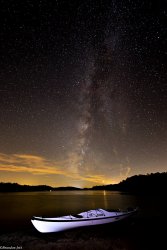
Laurel River Lake near near Corbin and London, Kentucky, surrounded by the Daniel Boone National Forest. Testing out my new Sigma 14mm 1.8 lens, and Eddyline Fathom LV touring kayak on an overnight trip. The lake has two boat-in campgrounds, and you'll have the place to yourself during the week in the off season.
View attachment 82482
White Oak. Campsite 18 on the point. No one around at all. Magical! Had great views east and west.Which campground were you at? I've only gone to White Oak, but I have a favorite site. Even when the power boats are swarming the lake, no one ever seems to be in the boat in campgrounds.
The light pollution there drives me nut for astro photos
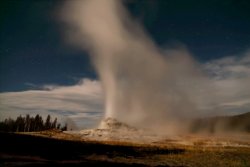


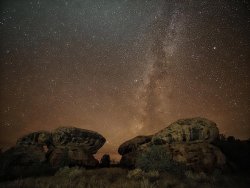
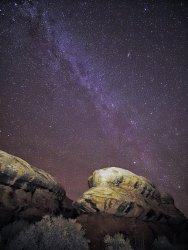
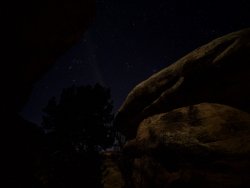
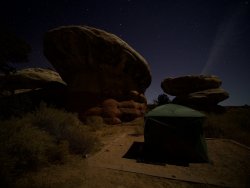

Very cool looking tent. Haven't seen that one before.We spent another two nights camping this week in The Needles, chilly. Good stargazing the second night, but I didn’t make it past 7:30pm, very tired. Rick stayed up and took photos, it kind of looks like a commercial for the tent company!
View attachment 85203
View attachment 85204
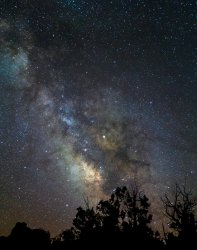

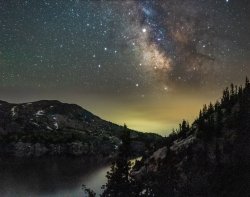



I noticed that someone posted a picture of the sun - our star- so I thought I'd post one too from the transit of Mercury across the sun on 11/11/19. A visible transit of Mercury across the sun is a rare event. The last one was in 2016 and the next will not happen until 2032. My plan had been to try to get pictures at intervals and then composite them into a single picture. The transit was already underway when the sun rose here in Nebraska and true to form it was snowing at sunrise. It continued overcast until the event was nearly over. I was having huge frustration but we did have some clear sky near the end and I was able to get a few pictures. I was surprised that the sun wasn't showing any sunspots. Mercury is the tiny dark spot at about 2 o'clock.
View attachment 85358
I noticed that someone posted a picture of the sun - our star- so I thought I'd post one too from the transit of Mercury across the sun on 11/11/19. A visible transit of Mercury across the sun is a rare event. The last one was in 2016 and the next will not happen until 2032. My plan had been to try to get pictures at intervals and then composite them into a single picture. The transit was already underway when the sun rose here in Nebraska and true to form it was snowing at sunrise. It continued overcast until the event was nearly over. I was having huge frustration but we did have some clear sky near the end and I was able to get a few pictures. I was surprised that the sun wasn't showing any sunspots. Mercury is the tiny dark spot at about 2 o'clock.
View attachment 85358






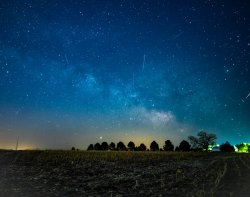
To my surprise, each of the 5 photos had at least one shooting star. There is one on the right margin that was very bright and was the only one I saw with my eyes. The camera caught the very end of it's flight. I liked the shooting stars so much I left them in on the composite.